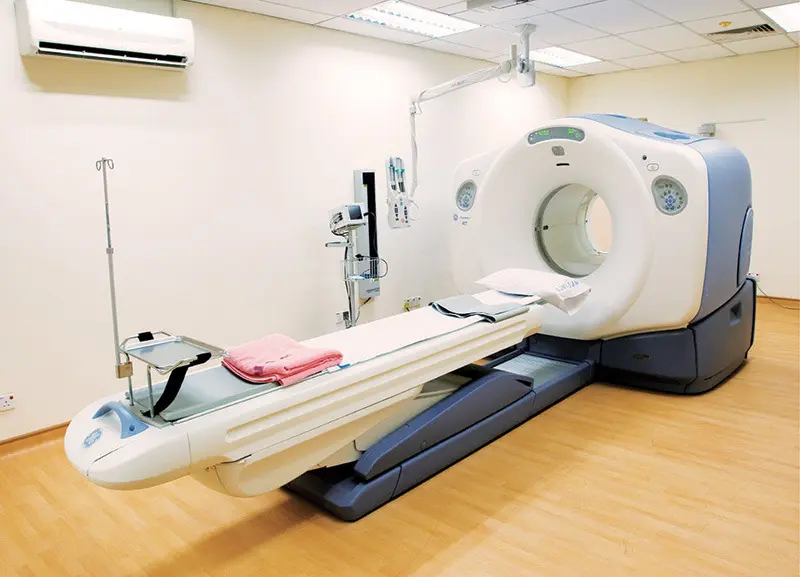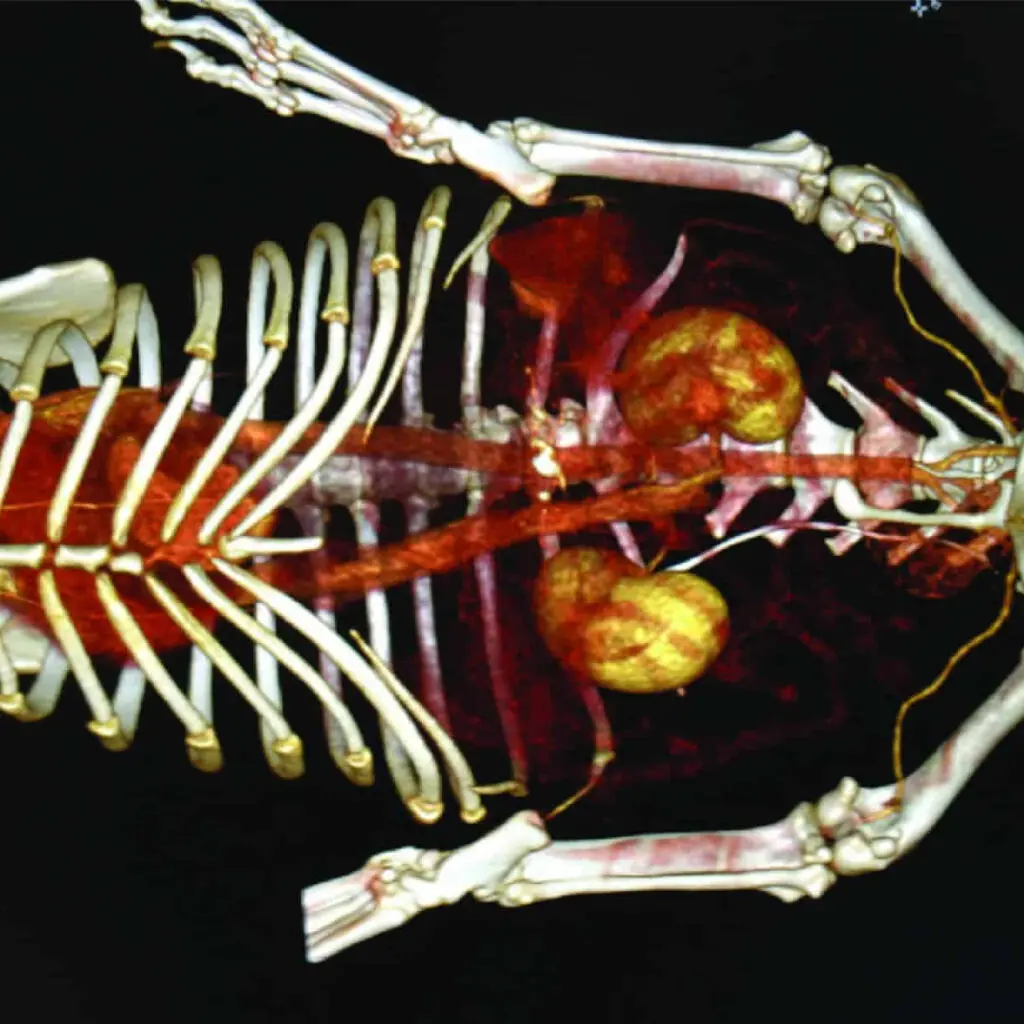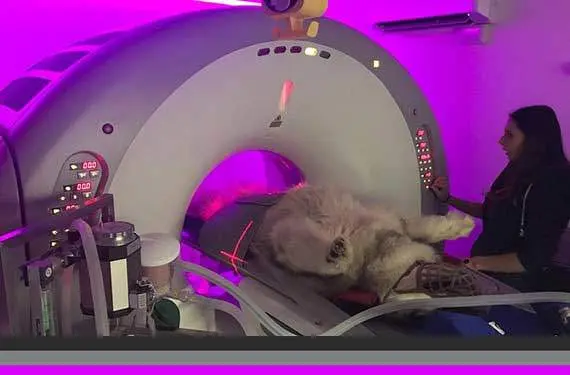
If you have a pet, you may have heard of CT scan as a diagnostic tool for various health conditions. But what exactly is a CT scan, and how is it done for pets? In this article, we will explain everything you need to know about how CT scan is done for pets, including what it is, why it is used, how it works, what to expect, and how much it costs.
What is a CT scan?

CT scan stands for computed tomography scan, which is a type of imaging technique that uses x-rays and a computer to create detailed cross-sectional images of the internal structures of the body. Unlike conventional x-rays, which only show a two-dimensional view of the body, CT scan can show multiple slices of a specific area, which can then be reconstructed into a three-dimensional model. This provides a much clearer and more accurate picture of the organs, tissues, bones, and blood vessels, and helps to diagnose and treat various diseases and injuries.
Why is CT scan used for pets?

CT scan is used for pets for a number of reasons, depending on the type and location of the problem. Some of the common conditions that may require a CT scan for pets are:
- Lung disease, such as pneumonia, bronchitis, asthma, or cancer
- Metastatic cancer, which is the spread of cancer from one part of the body to another
- Nasal cavity disease, such as tumors, polyps, or inflammation
- Orthopedic abnormalities, such as elbow dysplasia, osteochondritis dessicans, or fractures
- Dental problems, such as tooth decay, abscesses, or root canal infections
- Trauma or injury, such as spinal cord damage, brain hemorrhage, or internal bleeding
- Vascular anomalies, such as portosystemic shunts, which are abnormal connections between blood vessels
CT scan can help veterinarians to identify the exact location, size, shape, and extent of the problem, and to plan for the best treatment options, such as surgery, radiation therapy, or medication.
How does CT scan work for pets?
CT scan for pets works in a similar way as for humans, except that pets need to be anesthetized for the procedure, as they have to remain completely still and calm during the scan. The procedure usually takes about 30 to 60 minutes, depending on the area and complexity of the scan.
The pet is placed on a table that slides into a doughnut-shaped machine called the gantry, which contains the x-ray tube and the detectors. The x-ray tube rotates around the pet, emitting a beam of x-rays that passes through the body and is captured by the detectors. The detectors measure the amount of x-rays that are absorbed by different tissues, and send this information to a computer, which processes it and generates the images. The images are displayed on a monitor for the veterinarian to examine and interpret.
Sometimes, a contrast agent, which is a substance that enhances the visibility of certain structures, may be injected into the pet’s vein before or during the scan. This can help to highlight the blood vessels, organs, or tumors, and to differentiate them from other tissues. The contrast agent is usually iodine-based, and is generally safe, but may cause some side effects, such as allergic reactions, kidney problems, or seizures, in some pets. Therefore, the veterinarian will check the pet’s medical history and perform some tests before using the contrast agent.
What to expect from CT scan for pets?

Before the CT scan, the pet will need to fast for several hours, as anesthesia may cause vomiting or aspiration. The pet will also need to have some blood tests and a physical examination to make sure that it is healthy enough for the procedure. The veterinarian will explain the risks and benefits of the CT scan, and ask the owner to sign a consent form.
During the CT scan, the pet will be given general anesthesia, which will make it unconscious and pain-free. The pet will be monitored closely by the veterinary staff, who will check its vital signs, such as heart rate, blood pressure, and oxygen level. The pet will be positioned on the table, and may have some patches of fur shaved or clipped to attach the electrodes or the contrast agent. The table will move into the gantry, and the scan will begin. The pet will not feel any pain or discomfort during the scan, but may hear some clicking or buzzing noises from the machine. The veterinarian will be able to see the images on the monitor, and adjust the settings if needed. The scan will take about 30 to 60 minutes, depending on the area and complexity of the scan.
After the CT scan, the pet will be taken to a recovery area, where it will wake up from the anesthesia. The pet may feel groggy, dizzy, or nauseous for a few hours, and may have some soreness or bruising at the injection site. The pet will be given some pain medication and fluids, and will be observed until it is stable and alert. The pet will then be discharged, and the owner will be given some instructions on how to care for the pet at home. The pet may need to rest for a day or two, and avoid any strenuous activity or stress. The pet may also need to have some follow-up tests or treatments, depending on the results of the CT scan and the diagnosis of the condition.
How much does CT scan cost for pets?
The cost of CT scan for pets can vary depending on several factors, such as the location, the type and size of the pet, the area and complexity of the scan, the use of contrast agent, and the need for additional tests or treatments. The average cost of CT scan for pets in Nigeria is about N300,000 to N500,000, which is equivalent to about $730 to $1,220. However, this is only an estimate, and the actual cost may be higher or lower, depending on the specific case and the veterinary clinic. Therefore, it is advisable to consult with the veterinarian and get a quote before deciding to have a CT scan for pets.
READ MORE
How Pet Microchip Work: A Guide for Pet Owners
Conclusion
CT scan is a valuable diagnostic tool for pets, as it can provide detailed and accurate images of the internal structures of the body, and help to diagnose and treat various health conditions. However, CT scan for pets also has some risks and limitations, such as the need for anesthesia, the exposure to radiation, the possibility of side effects from the contrast agent, and the high cost. Therefore, it is important to weigh the pros and cons of CT scan for pets, and to discuss with the veterinarian about the best option for your pet’s health and well-being.
FAQs
- Q: Is CT scan safe for pets?
- A: CT scan is generally safe for pets, as the amount of radiation exposure is low and the procedure is done under anesthesia. However, there are some risks and complications that may occur, such as allergic reactions, kidney problems, seizures, infection, bleeding, or injury. Therefore, it is important to follow the veterinarian’s instructions and monitor the pet’s condition after the scan.
- Q: How long does it take to get the results of CT scan for pets?
- A: The results of CT scan for pets are usually available within a few hours or a day, depending on the availability of the veterinarian and the radiologist. The veterinarian will review the images and interpret the findings, and then contact the owner to discuss the diagnosis and the treatment plan.
- Q: What is the difference between CT scan and MRI for pets?
- A: CT scan and MRI are both imaging techniques that can create cross-sectional images of the body, but they use different methods. CT scan uses x-rays and a computer, while MRI uses a magnetic field and radio waves. CT scan is faster and cheaper than MRI, and can show more details of the bones and blood vessels. MRI is more expensive and time-consuming than CT scan, but can show more details of the soft tissues and the brain.
- Q: Can I stay with my pet during the CT scan?
- A: No, you cannot stay with your pet during the CT scan, as you will be exposed to radiation and interfere with the procedure. You will have to leave your pet with the veterinary staff, who will take good care of your pet and keep you updated on the progress. You can wait in the waiting area or outside the clinic, and you will be able to see your pet after the scan is over.
- Q: How can I prepare my pet for the CT scan?
- A: You can prepare your pet for the CT scan by following the veterinarian’s instructions, which may include fasting, withholding water, avoiding medications, and bringing the pet’s medical records. You should also keep your pet calm and comfortable, and reassure your pet that everything will be fine. You should also be prepared for the cost and the possible outcomes of the CT scan, and have a clear understanding of the procedure and the risks.


